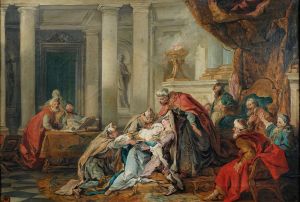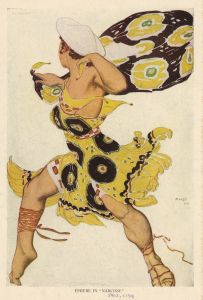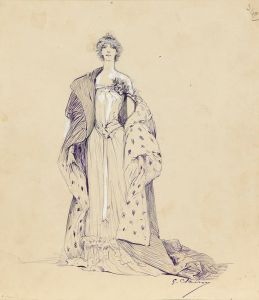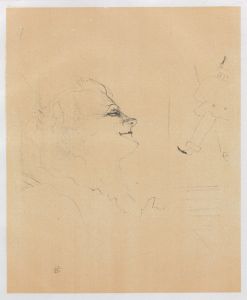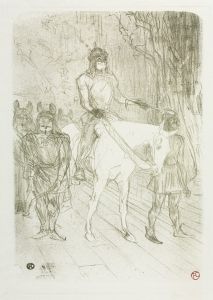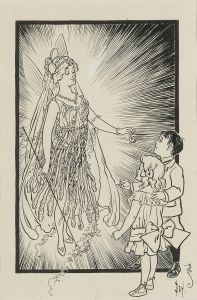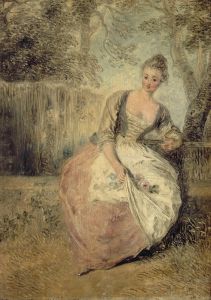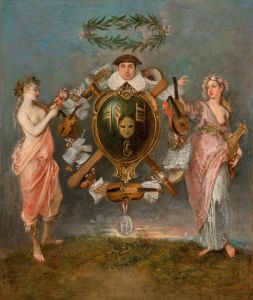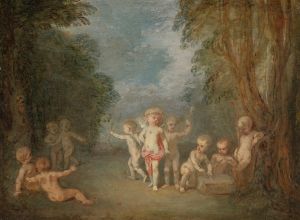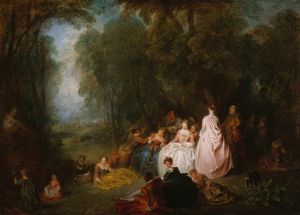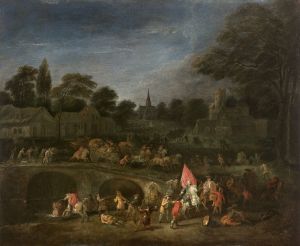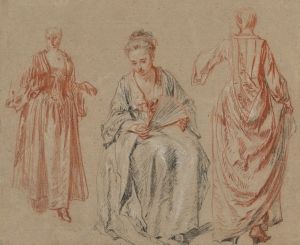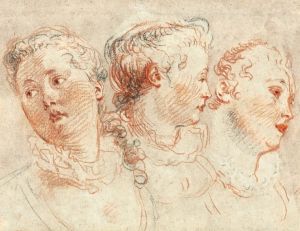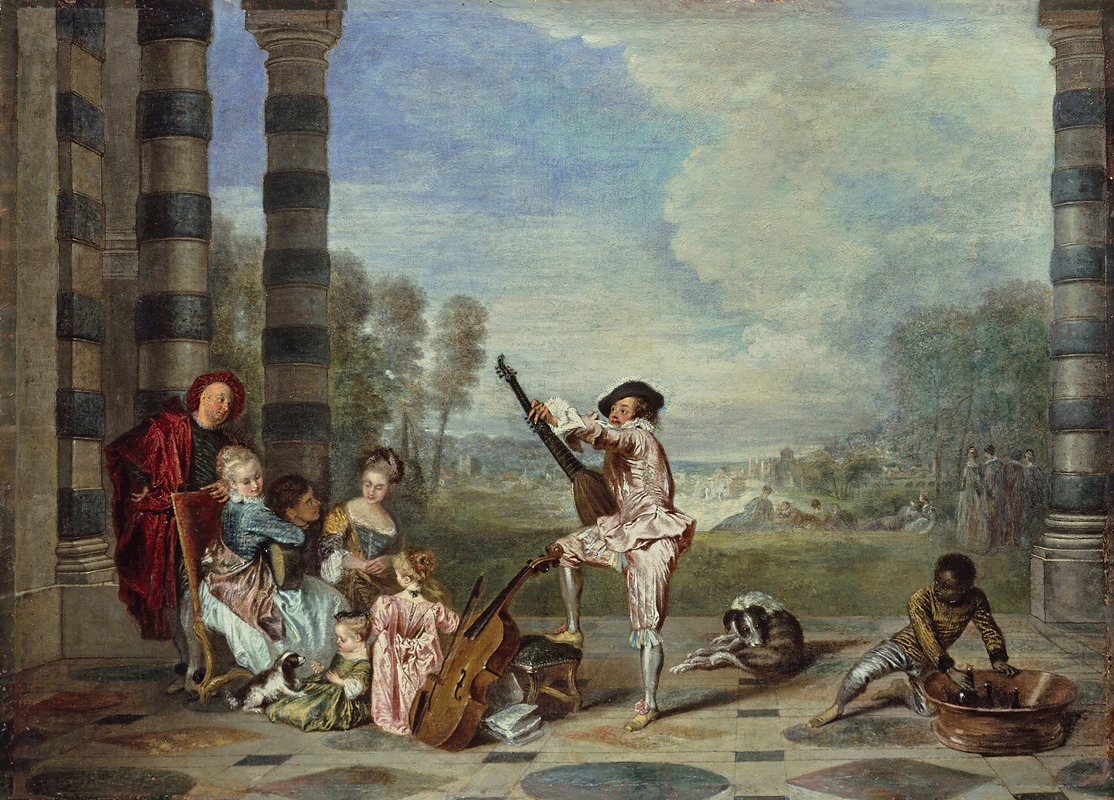
Les Charmes de la vie
A hand-painted replica of Jean-Antoine Watteau’s masterpiece Les Charmes de la vie, meticulously crafted by professional artists to capture the true essence of the original. Each piece is created with museum-quality canvas and rare mineral pigments, carefully painted by experienced artists with delicate brushstrokes and rich, layered colors to perfectly recreate the texture of the original artwork. Unlike machine-printed reproductions, this hand-painted version brings the painting to life, infused with the artist’s emotions and skill in every stroke. Whether for personal collection or home decoration, it instantly elevates the artistic atmosphere of any space.
Jean-Antoine Watteau, a prominent French painter of the early 18th century, is renowned for his contributions to the Rococo style, characterized by its lightness, elegance, and exuberant use of color. One of his notable works is "Les Charmes de la Vie" (translated as "The Delights of Life"), which exemplifies his mastery in capturing the subtleties of human interaction and the idyllic aspects of aristocratic life.
"Les Charmes de la Vie" is a painting that reflects Watteau's fascination with the fête galante genre, a term used to describe scenes of elegant outdoor entertainment. This genre was largely developed by Watteau himself and became a hallmark of his artistic legacy. The painting is believed to have been created around 1718-1719, during a period when Watteau was at the height of his artistic powers.
The composition of "Les Charmes de la Vie" is typical of Watteau's work, featuring a group of elegantly dressed figures engaged in leisurely activities within a pastoral setting. The scene is imbued with a sense of harmony and grace, capturing the essence of refined social gatherings of the time. Watteau's use of color and light is particularly noteworthy, as he employs a delicate palette to create a sense of atmosphere and mood. The figures are depicted with a sense of fluidity and movement, enhancing the overall feeling of spontaneity and joy.
Watteau's ability to convey emotion and subtle social dynamics is evident in "Les Charmes de la Vie." The interactions between the figures suggest a narrative of courtship and camaraderie, inviting the viewer to imagine the conversations and relationships at play. This focus on the nuances of human behavior is a defining characteristic of Watteau's work and contributes to the enduring appeal of his paintings.
The painting also reflects the cultural and social context of early 18th-century France, a time when the aristocracy was preoccupied with leisure and the pursuit of pleasure. Watteau's depiction of these themes offers insight into the values and lifestyle of the period, serving as both a celebration and a subtle critique of the society in which he lived.
"Les Charmes de la Vie" is housed in the Wallace Collection in London, where it continues to be admired by art enthusiasts and scholars alike. The painting is considered a masterpiece of the Rococo period and a testament to Watteau's skill as an artist. It remains an important work for understanding the development of French painting and the cultural milieu of the early 18th century.
In summary, "Les Charmes de la Vie" by Jean-Antoine Watteau is a quintessential example of the fête galante genre, showcasing the artist's ability to capture the elegance and charm of aristocratic life. Through his masterful use of color, composition, and attention to detail, Watteau creates a scene that is both visually captivating and rich in narrative potential. The painting stands as a significant contribution to the Rococo movement and continues to be celebrated for its artistic and historical significance.





